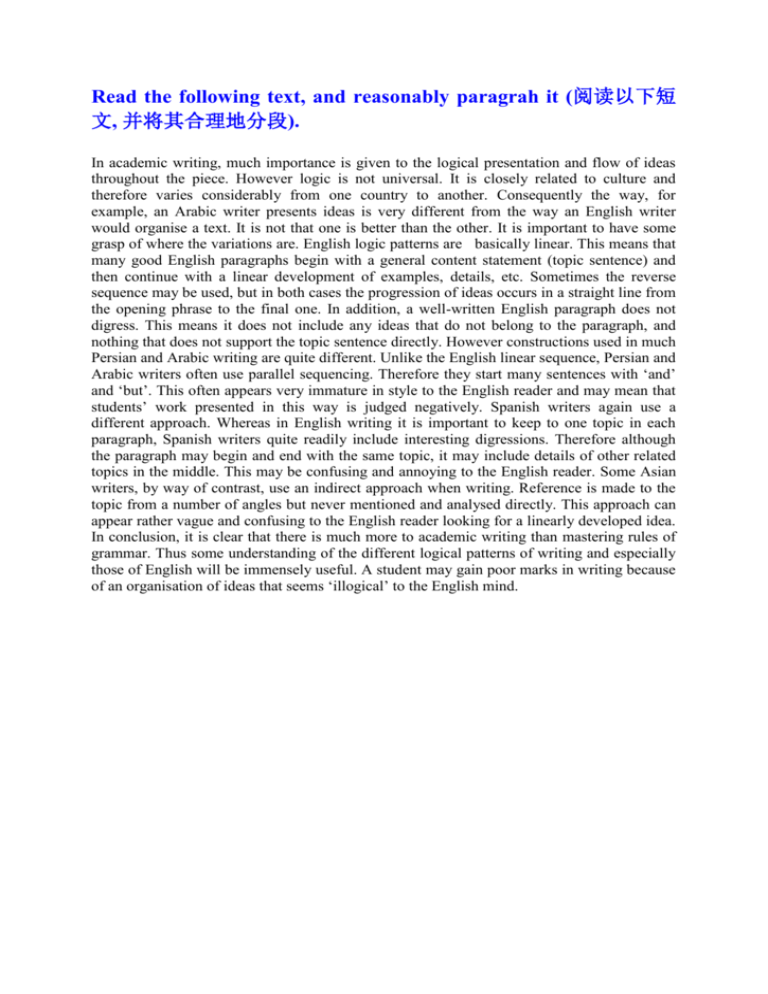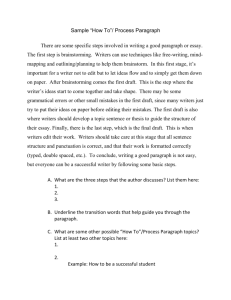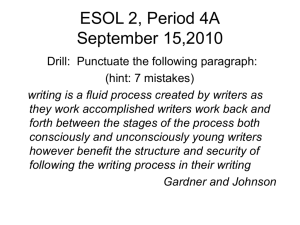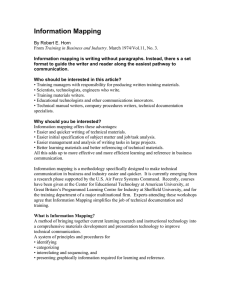Assignment 1
advertisement

Read the following text, and reasonably paragrah it (阅读以下短 文, 并将其合理地分段). In academic writing, much importance is given to the logical presentation and flow of ideas throughout the piece. However logic is not universal. It is closely related to culture and therefore varies considerably from one country to another. Consequently the way, for example, an Arabic writer presents ideas is very different from the way an English writer would organise a text. It is not that one is better than the other. It is important to have some grasp of where the variations are. English logic patterns are basically linear. This means that many good English paragraphs begin with a general content statement (topic sentence) and then continue with a linear development of examples, details, etc. Sometimes the reverse sequence may be used, but in both cases the progression of ideas occurs in a straight line from the opening phrase to the final one. In addition, a well-written English paragraph does not digress. This means it does not include any ideas that do not belong to the paragraph, and nothing that does not support the topic sentence directly. However constructions used in much Persian and Arabic writing are quite different. Unlike the English linear sequence, Persian and Arabic writers often use parallel sequencing. Therefore they start many sentences with ‘and’ and ‘but’. This often appears very immature in style to the English reader and may mean that students’ work presented in this way is judged negatively. Spanish writers again use a different approach. Whereas in English writing it is important to keep to one topic in each paragraph, Spanish writers quite readily include interesting digressions. Therefore although the paragraph may begin and end with the same topic, it may include details of other related topics in the middle. This may be confusing and annoying to the English reader. Some Asian writers, by way of contrast, use an indirect approach when writing. Reference is made to the topic from a number of angles but never mentioned and analysed directly. This approach can appear rather vague and confusing to the English reader looking for a linearly developed idea. In conclusion, it is clear that there is much more to academic writing than mastering rules of grammar. Thus some understanding of the different logical patterns of writing and especially those of English will be immensely useful. A student may gain poor marks in writing because of an organisation of ideas that seems ‘illogical’ to the English mind.











